Curb Spotlight: Kirsten Koehler

Curb Scholar Kirsten Koehler is quite the Renaissance woman, juggling interests from visual arts, creative writing, and dance to science and paleontology. Writing Fellow Becca Kantor chatted with Kirsten about how she explores creativity, her work with the DREAM lab, and her hopes for the future.
Becca Kantor: You’re currently majoring in Ecology, Evolution, and Organismal Biology. What drew you to this major, and how does it align with any goals you might have beyond college?
Kirsten Koehler: Ever since I was a child, I have loved paleontology, especially dinosaurs. When I was younger, I went on a paleontological dig in South Dakota and found several specimens, including a T. Rex tooth. Further, I have always been fascinated with evolution. This passion for paleontology and evolution has inspired me to major in Ecology, Evolution, and Organismal Biology. Currently, I am considering a PhD in a field related to paleontology. As far as career goals, I would love to conduct independent research and find a teaching position as a professor. Traveling the world for my research would be a wonderful experience as well. As far as the nature of my research, I would love to study theropod dinosaurs.
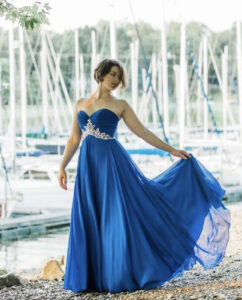 BK: Tell us a bit about your paleontological research with the DeSantis DREAM lab. How did you become involved with this research? What’s rewarding about this opportunity?
BK: Tell us a bit about your paleontological research with the DeSantis DREAM lab. How did you become involved with this research? What’s rewarding about this opportunity?
KK: The DeSantis DREAM Lab is run by Dr. Larisa DeSantis, a vertebrate paleontologist here at Vanderbilt who specializes in mammalian paleoecology. In my experience, the lab certainly lives up to its name. We do a lot of dental microwear analysis, which basically means we study the microscopic patterns of wear on the enamel of fossilized teeth. My first project with Dr. DeSantis involved studying the dental microwear of tyrannosaur species in North America to see if younger individuals filled a different niche than their adult counterparts. My upcoming research will seek to reconstruct the paleoecology of the Western Cape of South Africa by examining the dental microwear of various bovids (wildebeest, for example). Dental microwear analysis will indicate any changes in bovid diets, which will provide insight into how human activity has changed the food sources that are available to bovids.
I became involved with the DeSantis DREAM Lab after meeting Dr. DeSantis during a research match in the Spring of 2021. Right away, we clicked and were able to have great conversations about paleontology and conservation biology. Further, interest in conservation can also apply to the discourse surrounding climate justice, which is an important topic to me. It is always nice to be able to connect my research with ways to make the world a better place. This lab opportunity has been incredibly rewarding for me because it has also allowed me to reconnect with my childhood dreams. Being able to connect my past to my future so seamlessly feels like the greatest gift I could have asked for.
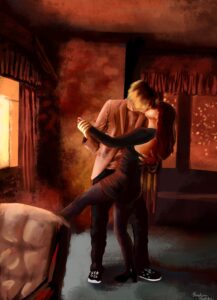 BK: You’re also quite prolific in terms of your creative pursuits, which include dance, visual arts, music, and writing. What do you find fulfilling about each of these pursuits? How do you find ways to practice each while at Vanderbilt?
BK: You’re also quite prolific in terms of your creative pursuits, which include dance, visual arts, music, and writing. What do you find fulfilling about each of these pursuits? How do you find ways to practice each while at Vanderbilt?
KK: I’ve always had a deep involvement with and appreciation for the arts, but it’s hard to have a conversation about my artistic pursuits without acknowledging the impact the pandemic has on artists. Artistic spaces, both physical and mental, have been hindered by the pandemic in drastic ways. Finding space for artistic practice and collaboration has been difficult for me.
I started ballet when I was two years old, so dance has been one of my longest artistic interests. It has been difficult to continue dancing throughout the pandemic due to the lack of space availability, but I have been able to find a few dance studios on campus to use. I also hope to get involved with VIDA, Vanderbilt’s Latin Dance group, because I would like to broaden my horizons in the field of dance. Dance is fulfilling to me because it allows me to express emotion with my body. Not only is it a wonderful exercise, but it also builds greater spatial awareness. I also think that using my body as an instrument to create art is a beautiful concept. Dancing allows me to feel time at a completely different level, and to me, that is freeing.
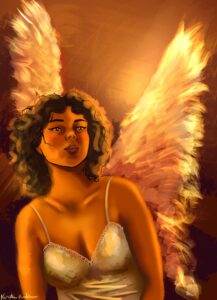
I started playing violin in first grade, and since then I have used it to expand my musical capabilities. Musical collaboration has allowed me to bond creatively with others. The impermanence of dance and music are intriguing to me. Because of the performative nature of these practices, the product a dancer or musician creates will never last unless it is recorded. Even so, taking solace in every movement or every note forces the artist and the viewer to truly live in the moment.
In terms of visual art, I do sculpture, watercolor, digital art, drawing, and painting. I also write poetry and short stories. Writing and visual art are fulfilling because they allow for a thorough rendering of ideas and emotions. These methods are how I best communicate. At Vanderbilt, I have been able to take classes about art and writing and engage in discourse about these subjects with my peers. I have also been able to do art and writing through Curb. Doing art with friends and sharing my writing has also helped me to connect with a large creative community at Vanderbilt.
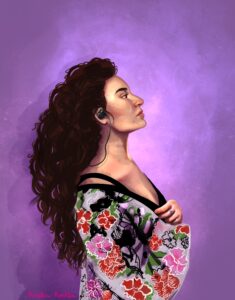
BK: Your interests range from the scientific to the creative. Not that the two are mutually exclusive, but how do you think these interests balance one another out? How does science inform your creative passions, and how might those creative pursuits inform your scientific interests?
KK: I think these interests are deeply connected because the arts can be one of the most effective methods of community outreach in the scientific community. Being able to work in an interdisciplinary method means that I can participate in research and use my artistic skills to connect my research to larger contexts such as social justice and conservation efforts. Having a creative background in a scientific field also helps me think of new and innovative ways to approach scientific issues.
BK: How has being a Curb Scholar shaped your experience at Vanderbilt so far?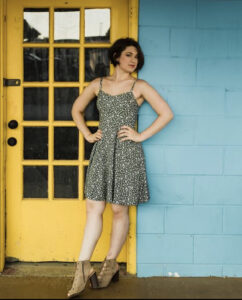
KK: The Curb Scholars Program has given me a network of creatives that I can work with, rely on, and share ideas with. Curb has also helped me see new perspectives on the world around me, and I can always count on my peers to inspire me. Through Curb, I have learned how to be a better ally, friend, and peer. I have learned how to implement ideas about social justice, specifically in artistic and creative communities.
BK: What else should we know to have a better understanding of who you are as a student and an individual?
KK: I grew to love the arts and science because they enabled me to identify, combine, and connect experiences to better understand the world, others, and myself. They have always been an important part of my life, and I would be incomplete without them.
